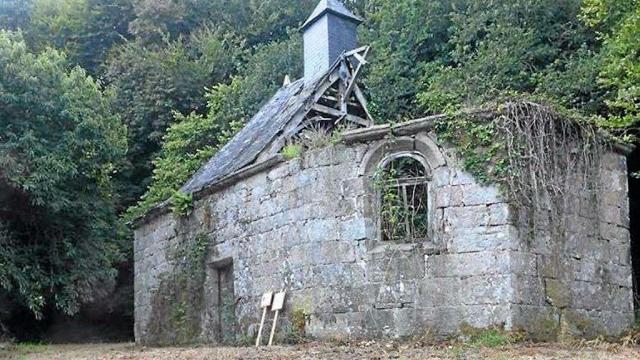An observation over the miles, which hurts the heart, both to the practicing Catholic but also to those who, passing through, feel the need to stop for a moment to put a candle and stay a few moments beyond time. : a closed church which opens only occasionally, perhaps once a month, because the rector of the parish has become, in spite of himself, manager of a parish ensemble with innumerable bell towers, parish churches with modest chapels. The passerby passes and very often finds himself facing a closed door. Even recently, on the day of a pardon for which there is only mass left, the chapel was closed in the afternoon: it was impossible to put a candle to the holy dedicatee.
And when the building is open, there is no one to welcome passers-by. Jesus is sometimes still there, in a corner of the building. His presence can be seen in the uncertain flickering of the small red lamp placed beside the tabernacle. In some places, he is no longer there. Some will say that he is everywhere, evacuating with one sentence the essential question of the Holy Presence. And then if a ray of sunlight escapes fleetingly through a stained glass window, if ever the precious hands that maintained the church are no more, you can glimpse the dust and the cobwebs. The side chapels for their part become the place of storage of what encumbers. But are we in a place of life or, to use the words of Cardinal Sarah, a tomb?
There are still volunteers in many parishes who can help. But there are also other steeples where nothing is possible. Everything is therefore closed, justifying the risk of theft and damage. A friend told me that just for two weeks, starting a tour in French departments near Franche-Comté, that all the churches he contacts to be able to visit them are closed. To date, about twenty parishes contacted, and each time, he must justify the reason for which he wishes to visit the churches. “They confiscated our heritage” he tells us.
The other day, I was walking in the Pays Gallo. I pass through a lost parish, in the middle of nowhere. The church was open. It’s already a good thing. Night lights and candles burned at the foot of the local saint. At the foot of the rood screen a small table had been placed, on which were laid out the life of the saint, the history of the church, the local canticle and a proposal for a stroll. A good idea for the passerby because the church, charming and old, invites you to stay there. And we see that the person who takes care of it puts his heart into it. And she, she opens the church every morning, closes it every evening, unlike other places.
We catch a glimpse of this parish, which was once flourishing because it was a reputed place of healing, inexorably falling towards abandonment: the furniture is dusty and the old high altar pushed aside waits for the insects to finish their work. Jesus-Eucharist has left and the table serving as an altar is only there to fill a certain void. We feel that there was a strong spirituality in this place but, except for the passerby who can meditate for a moment, there is nothing left. The building is slowly turning into a vestige of the past, like many of our churches and our chapels, in the most complete ignorance. Even the usual parishioners, continuing to go to Mass every Sunday in the new parish capital, are unaware of this plunge into the abyss and the programmed ruin of these walls built by the sweat of our ancestors for the glory of God and this will transmission of the faith that today we leave aside to go about our own business.
Should we resign ourselves to abandoning these places that were once so alive and which little by little, at least in our countryside, are turning into funeral rooms which are trying somehow to survive? Do we Christians realize that we ourselves must contribute to this life, and not expect others to take care of it for us?
How to do ?
Philippe Abjean proposed in his book “Teach me the words that wake up a people” concrete tracks. Ar Gedour, for his part, wondered why municipalities and parishes, in the digital age, do not develop tools that would open up these places where so many conversions have been experienced by a passing visitor. Start-ups have already worked on solutions, but the audacity to change is lacking. We talk about avoiding interpersonality, but if entering a church requires being part of an identified seraglio, how will we address anonymous peripheries?
To deal with thefts, the cameras having become inexpensive, video surveillance at a lower cost is possible. How many churches have decided to equip themselves with it? If the municipality and the parish justified (wrongly) too high a cost, could parishioners attached to their steeples not finance them?
To avoid the theft of statues, fix them to the walls after having chipped them (this again is not excessively expensive). The whole thing being to know if we preserve this heritage like a Harpagon, or if this heritage is a testimony of faith so that generations know it.
Ar Gedour does not limit himself to noting the decline, but imagines the future. We are currently in contact with a Breton start-up engaged in digital technology to offer a secure solution that would allow each chapel and church to be open for those who wish. If you need more information, we are at your disposal to present this solution to you and consider a future for your religious buildings.

